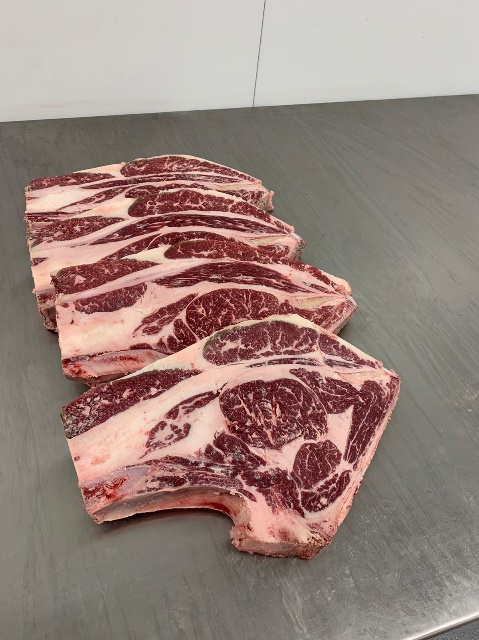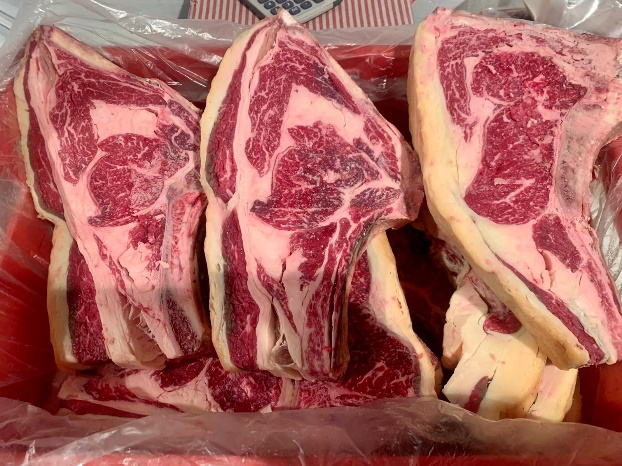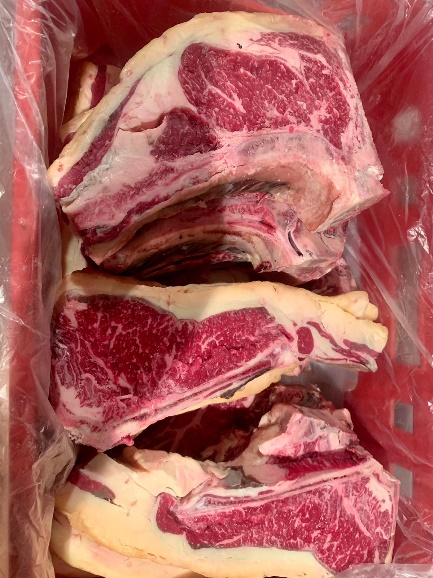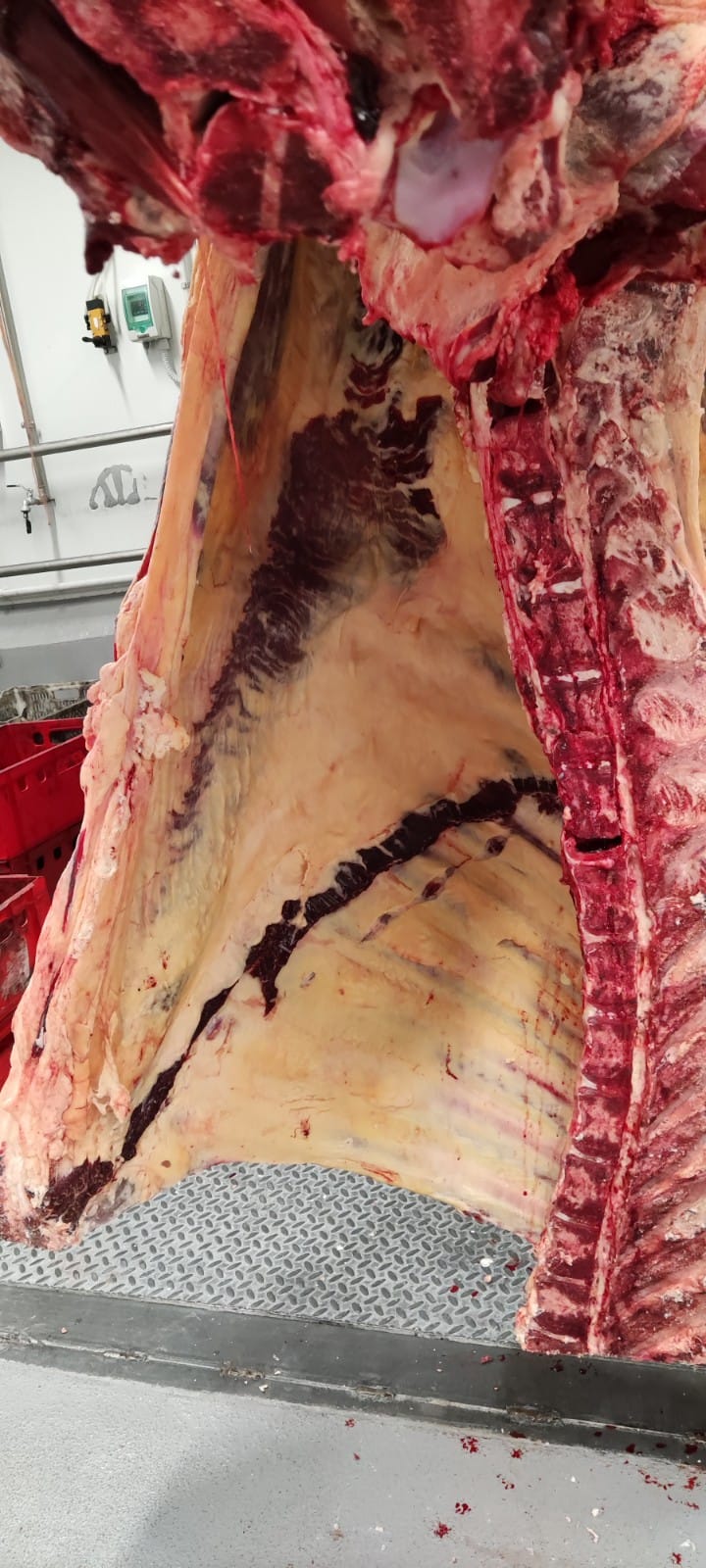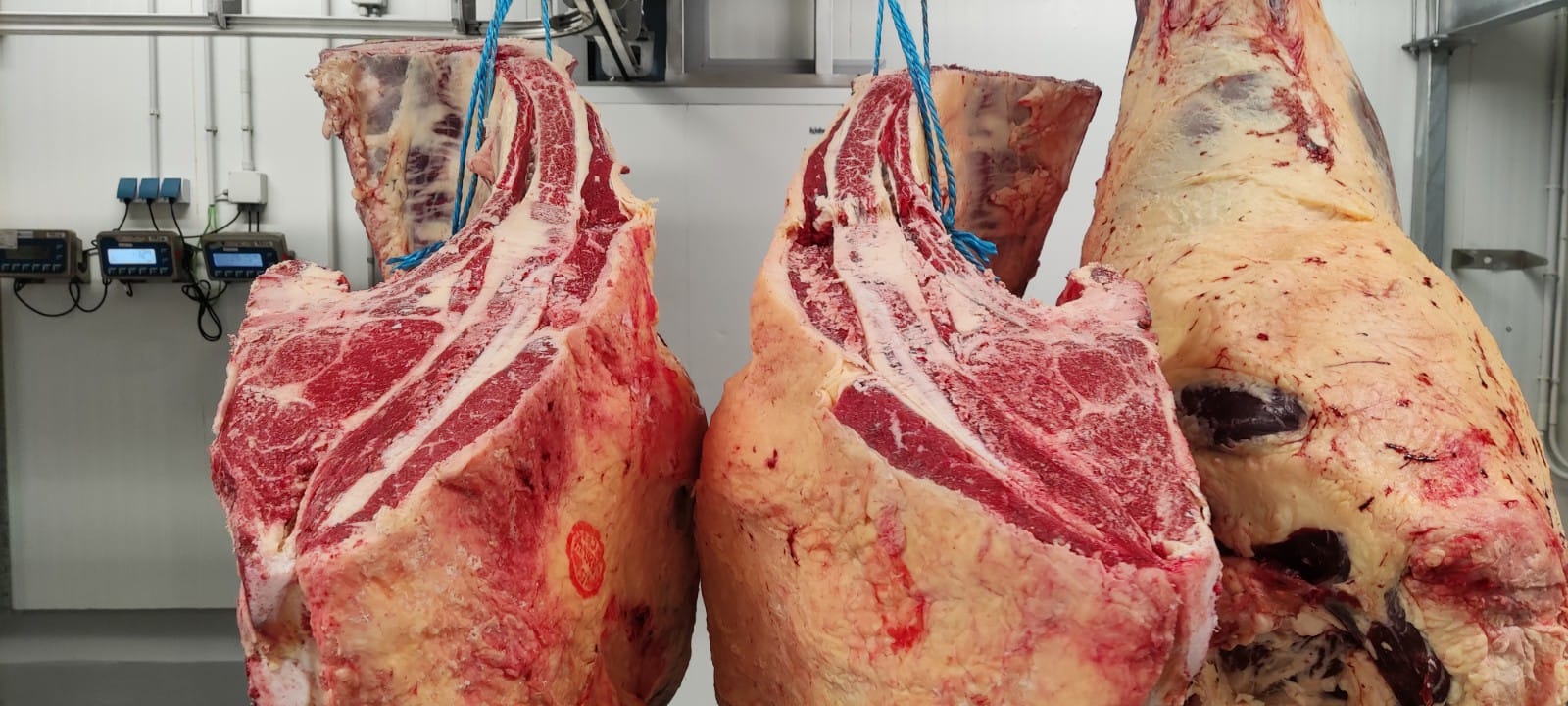Angus breed is a beef cattle breed specialized in meat production. These animals may be chosen to obtain quality meat, especially in terms of marbling. These moderate-sized and muscular animals with broad back and bone fine, may have category R carcass at slaughter. The slaughter yield is about 54-55% on average in young Angus cattle. These animals have an early sexual maturity, associated with a tendency to deposit fat early. Their good temper and great fertility make them interesting for farmers. Females calve easily and have developed maternal abilities. They can tolerate low to high temperatures. About the herd management, the males are castrated very young, and slaughtered at 17-18 months, and meat maturation may last a month and a half. Animals could be fed with straw and by-products such as broccoli, carrot, strawberry, or apple to reduce costs of raw material for feeding, and with corn silo when by-products decrease. The main benefits are a good carcass conformation, an increase of meat tenderness, flavour, and juiciness, which are positively associated to intramuscular fat, and consequently a higher consumer satisfaction. Angus is also a polled breed, which avoids dehorning needs. Females calve easily and have good maternal abilities. The main challenges are that meat colour as well as fat quantity preferences may change according to different markets or types of consumers. For instance, the tendency to deposit fat early at a lighter weight is a factor, which must be considered in order to achieve the weight desired by the market, depending on the degree of finish required.
Good practice implemented in an intensive family farm with a Spanish dry climate, which fattens calves of the Pirenaica, Blonde d'Aquitaine, Limousine and Angus breeds. This farm has about 200 cow of different breeds and they are crossed with males of Blonde dÁquitaine, Limousin and in the last time with Angus. The males with Angus genetic (pure or cross breed) are fatteninf for more time (until 2-3 years old) that the rest of calves that are fattening until 12-13 months. It has allowed them to differentiate themselves in the Spanish beef market .
Key success factors for implementation are breed choice and communication with customers (meat maturation time, age at slaughter, feeding system, …)
Impact on socio-economic resilience
No dehorning costs thanks to a polled breed.
Attractiveness of tasty meat for consumers.
Impact on animal Health and Welfare
Angus is a polled breed which avoids dehorning, and it permits fewer injuries between individuals in intensive farming.
Females calve easily and have good maternal abilities.
Animals that can tolerate low to high temperatures.
Impact on production efficiency and meat quality
Angus males and females have an early sexual maturity, that allow females to have a first calving when they are two years.
Rapid weight increase.
High level of intramuscular fat.
Audio-visual material
https://www.youtube.com/watch?v=yP1lA79mfuQ
|
Farmer comment
Farmers are delighted with this breed because it has allowed them to differentiate themselves in the veal market in Navarra. Especially in the restaurant sector.
Further information
The main breeds of beef cattle: http://bovin.qc.ca/wp-content/uploads/2016/03/Les-races-de-bovins-de-boucherie-2006.pdf
Carcass yield on IDELE (Institut de l’Elevage): https://www.mon-cultivar-elevage.com/content/idele-et-interbev-actualisent-les-rendements-carcasses
https://www.agrireseau.net/bovinsboucherie/Documents/CompRace-viande.pdf

